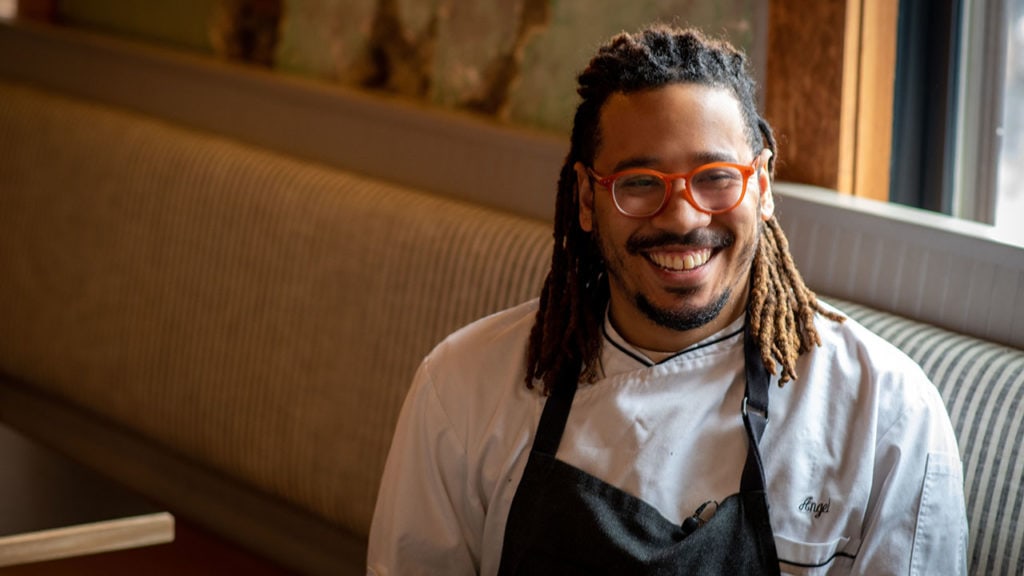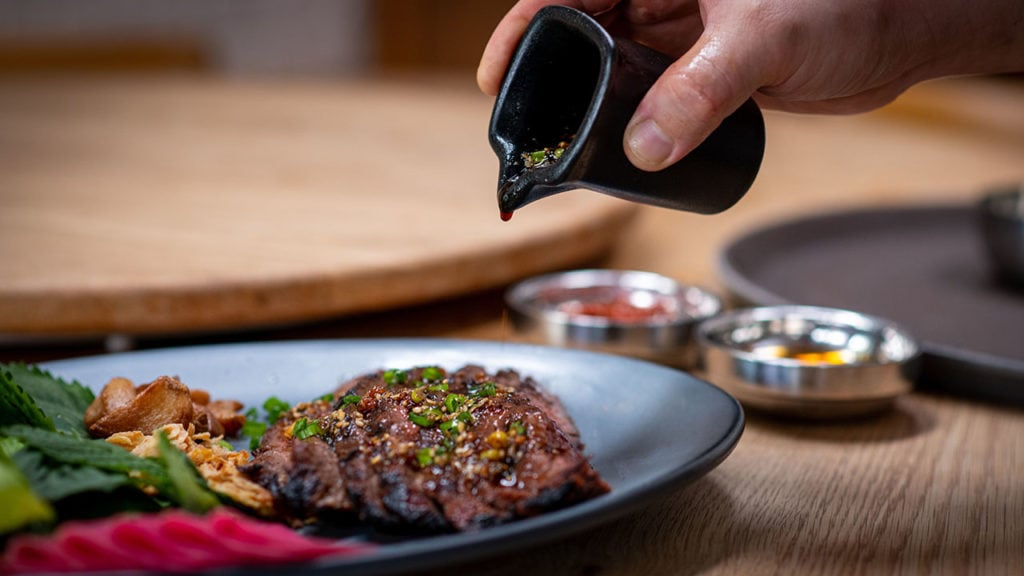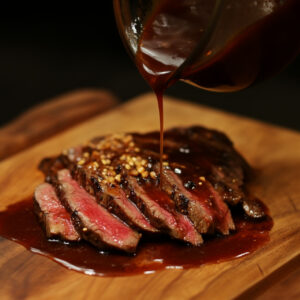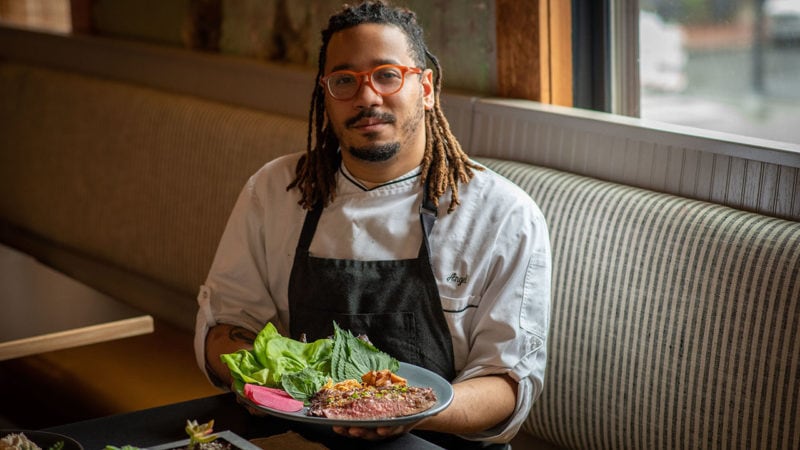Last Updated on February 2, 2025
Chef Angel Barreto grew up listening to stories of other lands. With his father in politics and his mother in the military, his taste for travel was cultivated from an early age. In particular, Barreto dreamed of Korea.
“I would hear stories of my mom talking about her time when she was stationed in a town of Korea…how things were so much different from here in the United States, like the funkiness of walking down the street and seeing people making kimchi on the street or eating some of the street foods.” Barreto’s appetite for travel and new flavors was always cultivated as his mother would often cook dishes that conjured memories of her time abroad.
While Chef Barreto had originally planned to follow his father’s footsteps in working for The White House, the call of the kitchen was too strong and he found himself in culinary school instead. Barreto was classically trained and worked for a variety of restaurants but his interests strongly lay in Asian cuisine. He began to teach himself how to cook with Thai and Korean flavors and sought out learning opportunities with other local chefs within that cuisine.

Barreto honed his skills to the point of entering and winning a culinary competition hosted by the Korean embassy. “My mother and father have always instilled in me that where you’re born doesn’t define you or make you who you are. You are beyond your surroundings, you can be so much more. That’s what pushed me to do a food that’s not necessarily tied to my culture and my upbringing.”
Barreto eventually joined forces with the award-winning Fried Rice Collective group in Washington DC to open a new restaurant named Anju, a modern Korean pub, meaning food consumed with alcohol. Within days of opening, Barreto’s cooking at Anju received critical acclaim and it quickly became one of the top dining destinations in Washington, D.C.
While the pandemic slowed the restaurant down, they’re still one of the top takeout spots in the city. “The great thing about Anju is that we’re not necessarily traditional or 100 percent modern, so I have the freedom and luxury to go wherever I want to go and do some of the esoteric Korean dishes that I love.”
For Angel, it’s all about building from the core value of a dish. “It has to have some sort of basis in Korean food. We do our research on it and then we will do our own twist,” he says. “My goal is to really push and expand people’s minds…it’s a great way to introduce people to great foods.”
Anju’s Ssam Board is one of their best-known dishes.

The word “ssam” in Korean implies “wrapped.” Ssam Boards are usually platters of grilled proteins with an assortment of leafy vegetables like lettuce for wrapping the meat within along with an assortment of toppings and sauces. It’s the perfect family meal; low maintenance and brings the family together to share in one star dish that has a variety of flavors. All you have to do is marinate your choice of ButcherBox meat and serve it with some sides for a complete meal.

“Kalbi Marinated” Flank Steak
Ingredients
- 3 pounds flank steak
- 1 small onion peeled and quartered
- 9 cloves peeled garlic
- 1 2- inch piece fresh ginger peeled and cut into coins
- 1 Asian pear cored and quartered
- 1 cup light brown sugar
- 1 cup light soy sauce
- 1 12- ounce can of Sprite
- ½ cup mirin rice wine
- ¼ cup sesame oil
- 1 tablespoon freshly ground black pepper
- 1 small jalapeno pepper roughly chopped
- 4 tablespoons toasted sesame seeds
- 1 bunch scallions chopped into thin rounds (white and green parts)
- 3 tablespoons neutral oil for cooking
Instructions
- Clean any silver skin left on the flank steak by running your knife carefully under the thin milky white membranes on the meat. Take caution to not cut too deeply. Discard the membrane.
- Use a tenderizing mallet, work the meat in a zigzag pattern hitting all the spots till there are tiny punctures evenly throughout the skirt steak. Flip and repeat.
- If you don’t have a tenderizer, use a fork to puncture holes in a zigzag pattern and repeat the process as you would with a mallet. Set the skirt steak aside in a bowl or Ziploc bags.
- Make the marinade: Combine the onion, garlic cloves, ginger coins, brown sugar, soy sauce, Sprite, mirin, black pepper, sesame oil, black pepper, and jalapeno pepper together in a blender, secure the lid, and blend until smooth and combined. Transfer to a large bowl and add the sesame seeds and scallions.
- Add the steak to the bowl, cover, and refrigerate overnight.
- When you’re ready to cook, heat the oven to 350°F. Remove meat from bowl and discard marinade.
- Place a cast-iron skillet over medium-high heat. When hot, add the oil. When the oil is shimmering and hot, add the steak and cook for 3 minutes. Flip and cook for 2 minutes.
- Place skillet in the oven and cook for another 2 to 5 minutes. Remove from oven and rest for 3 minutes before slicing.
Notes
Sabrina Medora brings a unique voice and a diverse perspective to food writing. Born in Canada, she spent her formative years across continents with stints in Mumbai, Singapore, and New Jersey, all while staying connected to her Parsi roots; known for their celebration of food. Thanks to this upbringing, she is a skilled recipe developer specializing in Indian and pan-Asian cuisine.
With a Master’s in Creative Writing from The University of Chicago, her passionate and thoughtful pieces have appeared in award-winning publications including Food & Wine, Heated, Eater, Plated, The Kitchn, Wine Enthusiast, and more. In 2018, she launched Un-Plated: a national multimedia platform dedicated to celebrating the little-known stories and unsung heroes of the restaurant industry.



